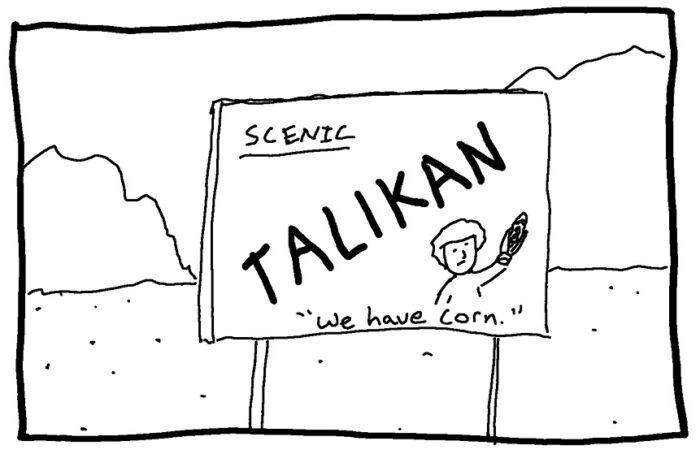Most of the time, the experience of reading The Travels of Marco Polo goes like this: You read a sentence that says, “After those twelve days’ journey you come to a fortified place called Taican, where there is a great corn market.” Hearing the name “Taican,” you decide to check the footnotes because you don’t know where that place is and you assume its name has changed sometime in the last seven centuries.
Sure enough, the footnotes tell you that “Taican” is now “Talikan,” located in the province of Kataghan (or Kunduz) in northern Iran. Armed with this information, you realize that you still don’t know anything about the place. So, you go to Google Maps to look it up.

“There it is!” you say. “I still know nothing about it!” A red pin on a map can only tell you so much. So, you try to find pictures on street view, but there aren’t any actual pictures of Talikan, just pictures of nearby dirt roads that wind through some mountains.

While that does give you some idea of what it must have been like to travel through that part of the world, you still don’t feel like you’ve got a clearer picture of what life in Talikan is actually like. What about their culture, their traditions? What about the corn market?! You dive back into the footnotes for answers.
” … Wood speaks of Talikan in 1838 as a poor place of some 300 or 400 houses, mere hovels; a recent account gives it 500 families.”
Wait, what? 500 families? Hovels? You decide to check Wikipedia, because something here isn’t adding up.

That’s when you realize that you’ve been researching a tiny, inconsequential village in Iran for the last ten minutes. It might have been popular in the 13th century, but it sure isn’t now.
I’m starting to believe that Marco Polo intended this book to be used by merchants who were going to travel the Silk Road — they’re the only ones to whom most of this information would be practical.
The writing style is fun, though, if you can get into the tone of medieval literature. And you absolutely don’t have to read all the footnotes. This isn’t a history class.
Although I am curious about what happened to the corn market. (I’m a Nebraskan — corn is our thing.)
